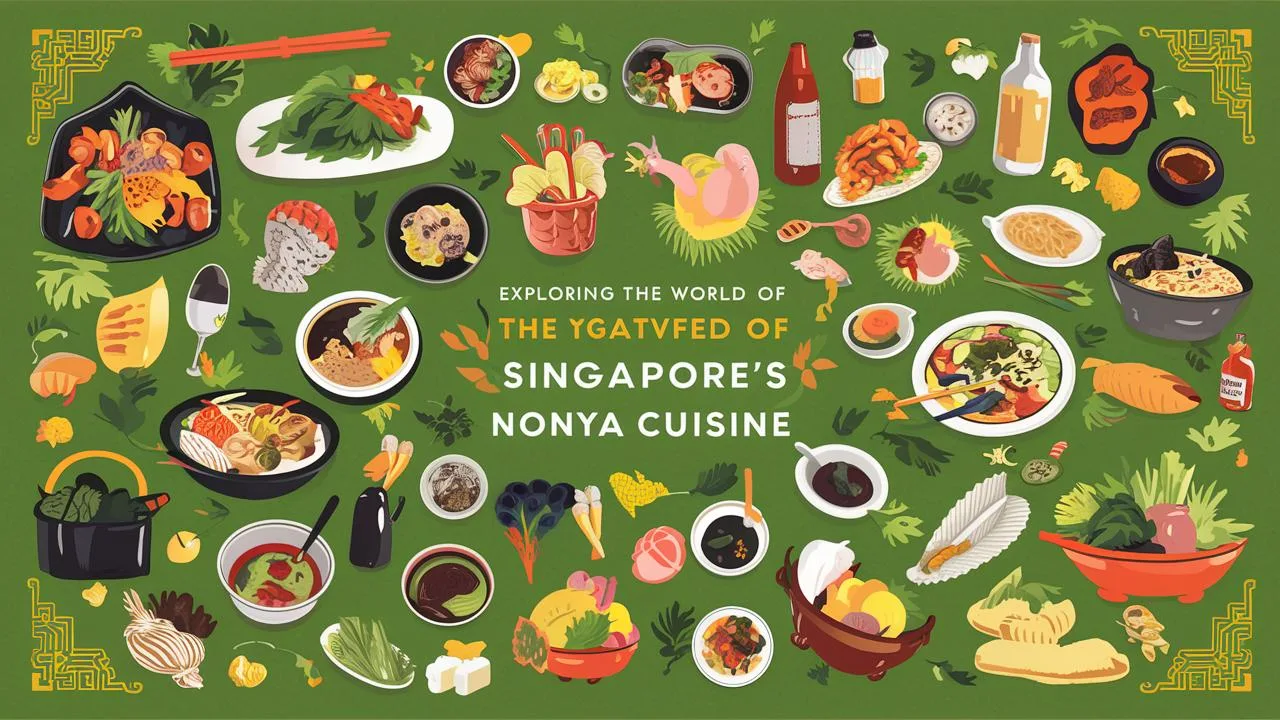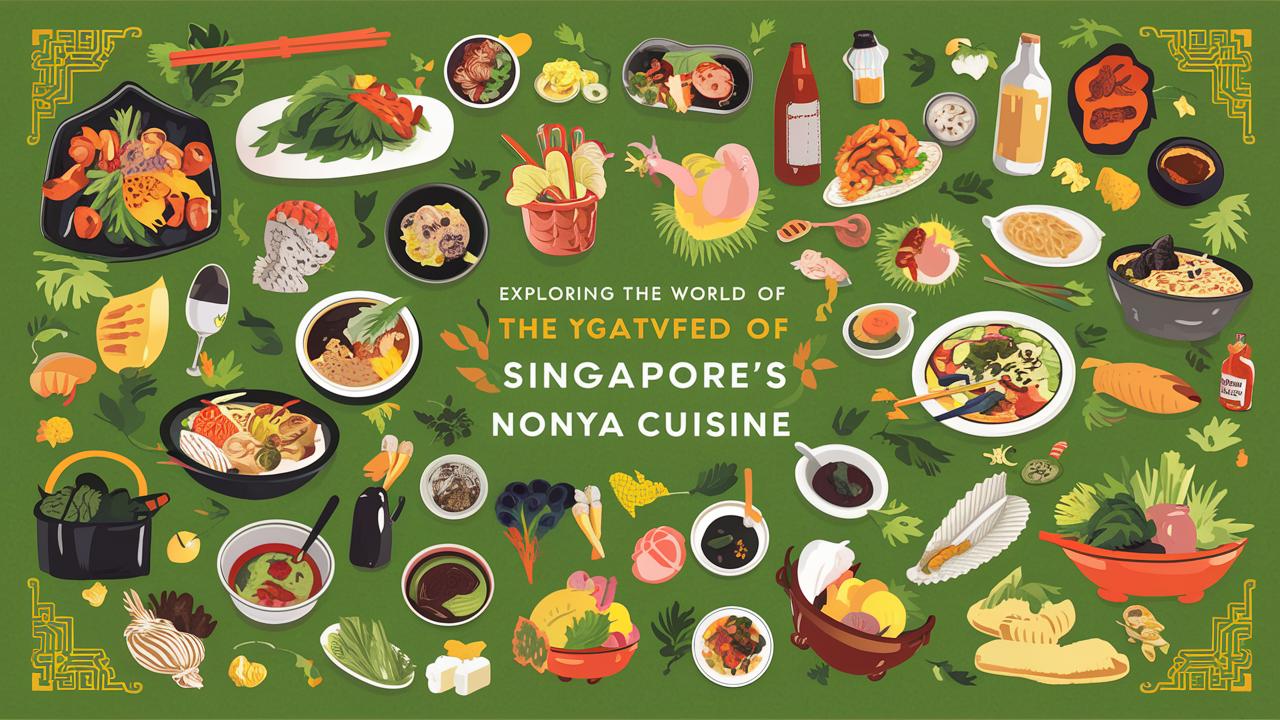What are the key ingredients used in nonya cuisine?
Introduction
Welcome to a flavor-packed journey through the intriguing and aromatic world of Singapore’s nonya Cuisine! If you’ve ever wondered what happens when you mix a little bit of Chinese, a dash of Malay, and a whole lot of love, then you’re in the right place. Get ready to explore an eclectic blend of spices, vibrant colors, and mouthwatering flavors that are sure to make your taste buds dance like they’re auditioning for a reality cooking show.
what is Nonya Cuisine?
Navigating the rich tapestry of singaporean cuisine would be incomplete without uncovering the charms of Nonya cuisine, often affectionately referred to as Peranakan cuisine. Originating from the Peranakan people – descendants of Chinese immigrants who settled in the Malay Archipelago, including malaysia and Singapore – Nonya cuisine beautifully marries Chinese ingredients with Malay and Indonesian spices and cooking techniques.
Talk about a culinary power couple! This gastronomic tradition is not just about stirring pots; it’s about stirring emotions, connecting people, and keeping age-old traditions alive with every flavorful bite.
A Brief History of Nonya Cuisine
Let’s hit rewind and delve deep into culinary chronicles. Many moons ago, when Chinese immigrants anchored in the Malay lands, love stories began to brew over simmering pots. The existence of Nonya cuisine is attributed to the cultural confluence that arose from Chinese settlers marrying local Malay women, dubbed ‘Nonyas’. Fast forward a few hundred years, and you have a cuisine that’s as vibrant and colorful as the culture it hails from.
Imagine this: an ancestral kitchen bustling with the aromas of coconut milk, galangal, and pandan leaves, where every dish crafted was a symbol of love, heritage, and the desire to hold onto one’s roots while embracing new surroundings. That’s the essence of Nonya culinary tradition for you!
Main ingredients in Nonya Cuisine
Before we venture further, let’s spruce up our nonya kitchen with some must-have ingredients that are the stars behind the scenes:
- Pandan Leaves: Used for flavor and fragrance in desserts and even savory dishes.
- Santan (Coconut Milk): The creamy backbone of many a Nonya dish.
- galangal: Think ginger, but sassy and with a more peppery kick!
- Tamarind: Brings a tangy twist that leaves you puckered up in the best possible way.
- Lemongrass: Infuses dishes with a citrusy aroma that’s as refreshing as a tropical breeze.
these ingredients are not mere components; they are the unsung heroes that string together the melodic symphony of each dish.
Conventional and Popular Nonya Dishes
On to the pièce de résistance – the menu! Let’s dig into some traditional dishes that are bound to make you feel like you’re dining in the heart of a Nonya home.
Ayam Buah Keluak
Brace yourself for a bold play of flavors. Ayam Buah Keluak is a rich and decadent chicken dish cooked with ‘buah keluak’,a black nut that has been soaked for days to unveil its deep,earthy flavor. Imagine umami meeting campfire smokiness – that’s Buah Keluak for you!
Kuih Lapis
If rainbows had a taste, they’d probably taste like Kuih Lapis. This multi-layered cake is rich, sweet, and subtly infused with coconut, and pandan, embodying the very essence of patience as each layer is steamed to perfection.
Otah Otah
Prepare for a spicy embrace with Otah otah — a harmonious blend of fish, spices, coconut milk, and aromatic herbs, all grilled to a glorious char within banana leaves. Talk about a flavor explosion!
Rendang
Who needs a six-pack when you’ve got six-hour-cooked beef? Rendang combines beef, coconut milk, and a medley of spices, slow-cooked to velvety perfection.Your taste buds will be busy singing praises.
Nasi Lemak
How could we not mention Nasi lemak – fragrant rice cooked in coconut milk partnered with sambal, anchovies, and eggs. Each plate feels like a hug from Grandma.
Cultural Significance of Nonya cuisine
Nonya cuisine is not just about filling stomachs; it transcends mere sustenance to become a feast for the soul.It is a microcosm of historical identities, cultural narratives, and familial bonds that pass from one generation to the next. Special occasions, such as weddings or religious ceremonies, are often accompanied by an array of meticulously prepared Nonya specialties, each dish a conduit of tradition and familial lore.
This cuisine isn’t merely eaten; it’s cherished. Honor is given to the skills of the forebears, whose hands wrought each unique flavor, whose stories imbue each aromatic steam, and whose spirits linger in the warmth of every dish. It’s an invisible heirloom left to descendants; its cultural significance echoes through every kitchen, household, and community gathering.
The Evolution of Nonya Cuisine
Nonya cuisine, much like the people from whom it was born, continues to evolve. With globalization and intercultural exchanges enriching the culinary landscape, the foundations of Nonya cooking remain as stalwart as ever, yet they welcome innovation with open arms (or should I say, ‘soup’ spoons?).And who’s to complain when the result is as lip-smackingly enticing as Nonya takes on pasta or tacos?
While muskets have long since been replaced by modern kitchen gadgets and Instagram filters, the evolution doesn’t compromise the authenticity.The core of Nonya cuisine is the familial connection it nurtures, always staying relevant amid changes.
Where to Experience Nonya Cuisine in Singapore
Without a doubt, hungry travelers and foodies should prioritize sampling authentic Nonya cuisine when visiting Singapore. Hear’s a list of not-to-miss locales to satisfy your Nonya cravings:
- Blue Ginger: if you seek heritage and hospitality clashing suaver than a James Bond premiere, then head to Blue Ginger. their Ayam Buah Keluak is to die for without having to dig your own gastronomic grave.
- Violet Oon: Catering to Nonya cuisine parlance but in a chic setting, Violet Oon dishes out traditional recipes with a splash of style that makes your soul smile.
- Chilli Padi Nonya Restaurant: For those who want to stick to traditional roots, Chilli Padi offers a flavorful anthology of Peranakan home-style dishes embracing authenticity in every bite.
Be ready to immerse yourself in the flavors, for in every bite lies a tale of heritage that binds generations together in a colorful tapestry of culinary art.
Conclusion
From fiery sambal to the sweet finale of a satisfying dessert, Nonya cuisine offers a spellbinding array of tastes sure to captivate and delight even the most discerning food aficionados. Whether you’re an epicurean explorer or just someone looking for something new and exciting, taking a culinary journey into singapore’s Nonya cuisine is akin to opening a Pandora’s Box of flavors and cultural richness.
So here’s a flavorful send-off: nonya dare to whet your appetite for more Nonya adventures. Whether through an online order (thanks, 21st-century ingenuity!) or a spontaneous trip, dive in and savor the delicious legacy of Singapore’s Nonya Cuisine today. Bon appétit!


